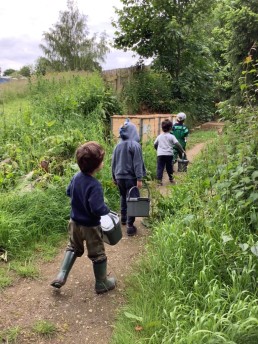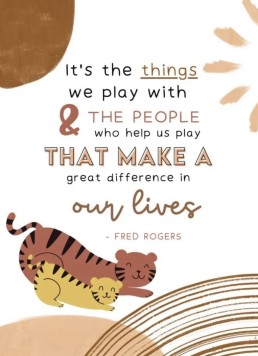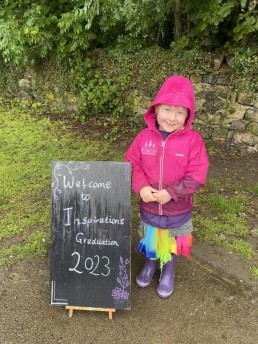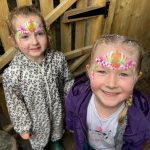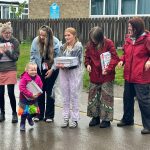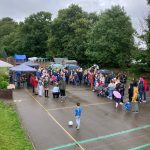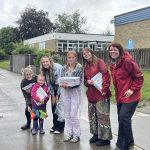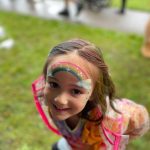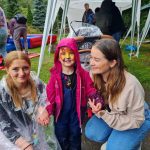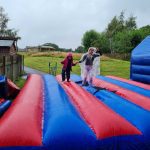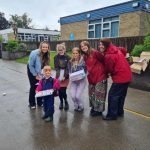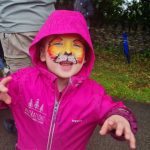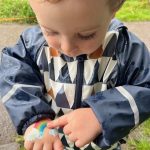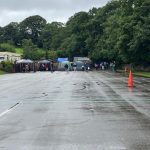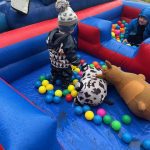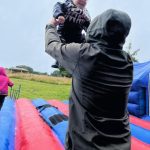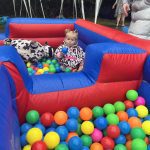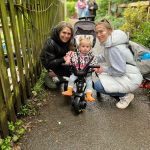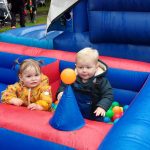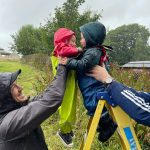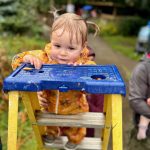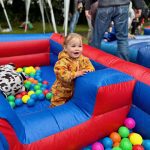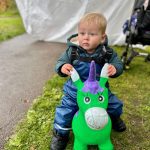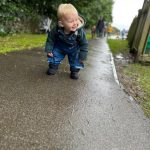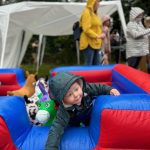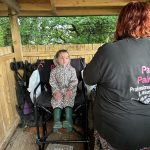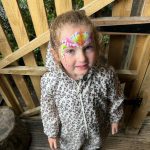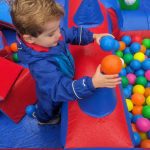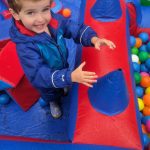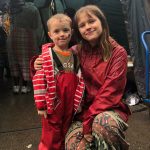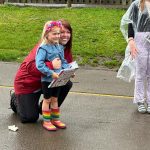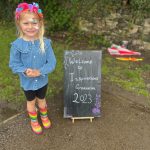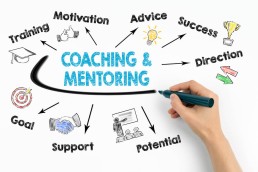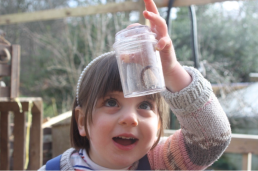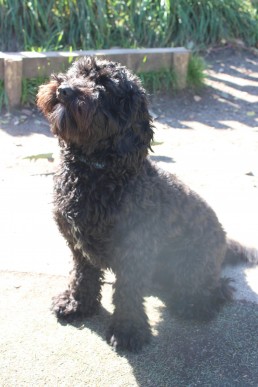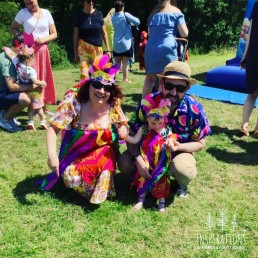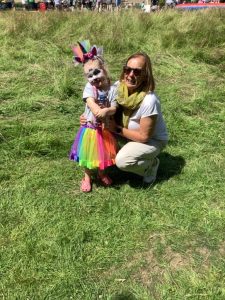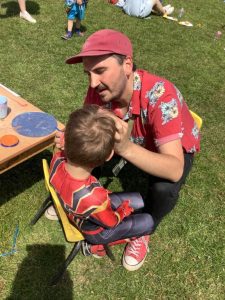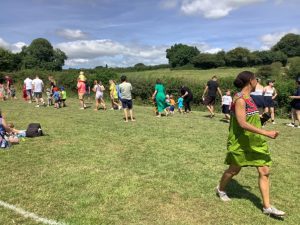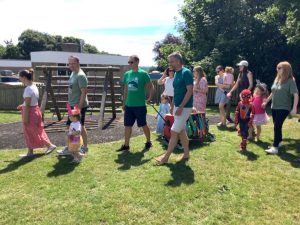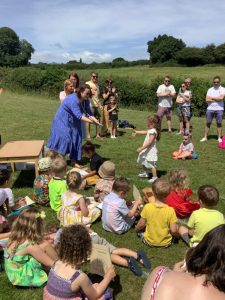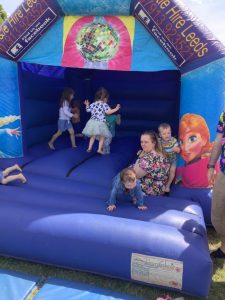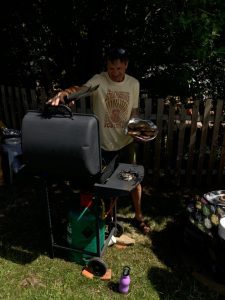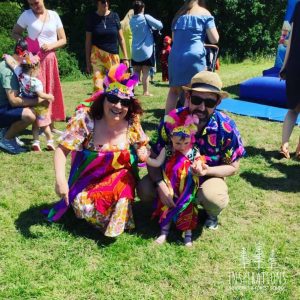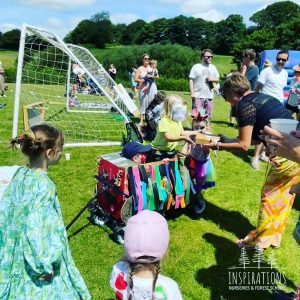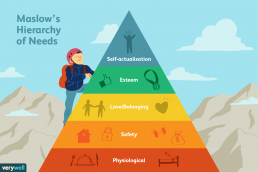Compost Collective
Inspiring Green Habits
At Inspirations Nurseries, we believe in nurturing not only the minds of our little ones but also instilling in them a deep sense of environmental responsibility. Thanks to Foodwise Leeds our latest initiative; 'Compost Collective' is underway and aims to educate children about the importance of composting and empower them to make a positive impact on the planet, starting from an early age.
Find out more about the amazing Food Wise-

In this blog post, we will delve into the significance of teaching composting to children and how educators play a vital role in fostering a sustainable mindset.
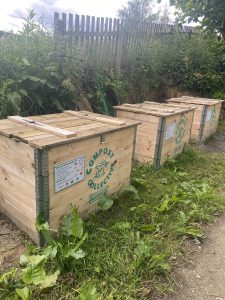
The Importance of Composting:
Composting is a natural process that transforms organic waste into nutrient-rich soil. By composting, we divert organic waste from landfills, reduce greenhouse gas emissions, and enrich the soil for future plant growth. Educating children about composting not only teaches them about the cycle of life but also installs in them an understanding of the interconnectedness of all living things. It helps children develop a sense of responsibility towards the environment and empowers them to take action to protect it.
Starting Early:
Children have a remarkable capacity for learning and absorbing information, making early childhood an ideal time to introduce them to the concept of composting. By exposing children to composting at a young age, we lay the foundation for a lifetime of environmentally conscious choices. Starting early also allows children to witness the entire composting process, from collecting food scraps to observing the decomposition and transformation into nutrient-rich soil. This hands-on experience fosters a deep connection with nature and enables children to appreciate the value of waste reduction and resource conservation.
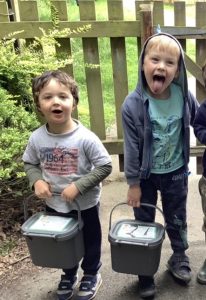
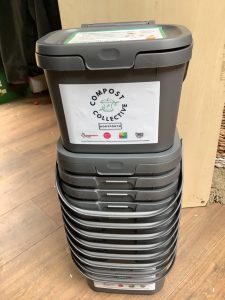
Catalysts for Change: Educators
As educators, we have the privilege and responsibility to shape young minds and inspire them to become environmentally conscious individuals. By incorporating composting into our curriculum, we can create an immersive learning experience that goes beyond the classroom walls. Through interactive activities, storytelling, and gardening projects, we can engage children in meaningful discussions about the importance of composting and its positive impact on the environment. By involving children in the entire composting process, we empower them to become active participants in sustainable practices.
Benefits of Composting Education:
Teaching children about composting provides numerous benefits. Firstly, it instills in them a sense of environmental stewardship, nurturing a generation that cares deeply about the planet's well-being. Secondly, composting education encourages critical thinking and problem-solving skills as children learn about decomposition, nutrient cycles, and the science behind composting. It also promotes teamwork and cooperation as children work together to collect and manage compost materials. Additionally, composting education fosters a sense of responsibility and self-sufficiency as children take ownership of the composting process.
Inspiring a love for nature and sustainable practices in young children is a powerful way to create a greener and brighter future. By introducing composting education in early childhood, we equip children with the knowledge and skills to make a positive impact on the environment. At Inspirations Nurseries, our Composting Project aims to cultivate a sense of environmental responsibility, foster a deep connection with nature, and empower children to become agents of change. Together, let's sow the seeds of sustainability and nurture a generation that cherishes and protects our beautiful planet.
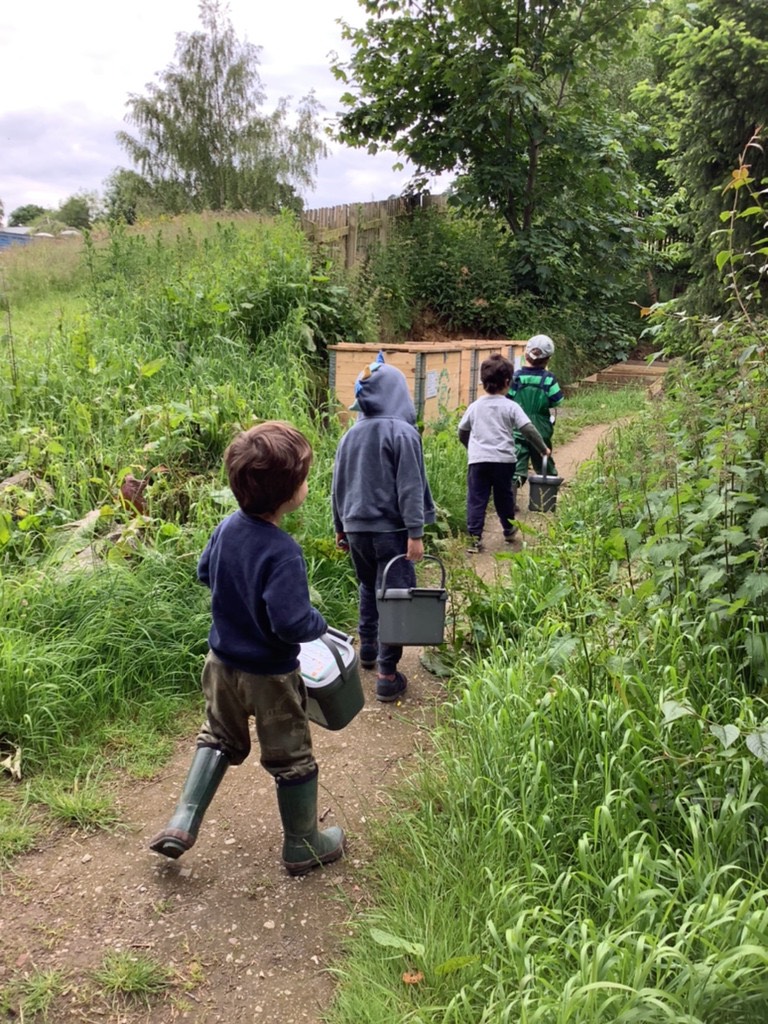
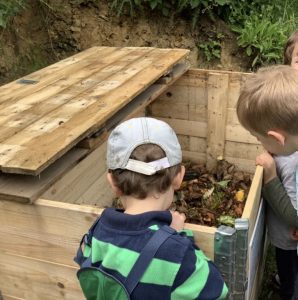

Nurturing Imagination and Creativity
In today’s fast-paced world, where structured learning and organized activities often take centre stage in a child’s life, the value of unstructured, child-led play is sometimes underestimated. The Reggio Emilia approach, an innovative educational philosophy that originated in the town of Reggio Emilia, Italy, places a profound emphasis on the significance of child-led play in early childhood education. In this blog, we’ll explore the importance of child-led play and how it aligns with the principles of the Reggio Emilia approach.
Understanding Child-Led Play
Child-led play, often referred to as free play or unstructured play, is a type of play where children take the lead in choosing what to do, how to do it, and for how long. It occurs when children engage in activities driven by their interests, imagination, and curiosity, rather than following adult-directed instructions. This type of play can involve activities like building with blocks, creating art, exploring nature, or pretending to be characters in imaginative scenarios.
The Reggio Emilia Approach
The Reggio Emilia approach to early childhood education is renowned for its unique perspective on child development and learning. Developed by Loris Malaguzzi in post-World War II Italy, this approach is deeply rooted in the belief that children are capable, curious, and rich in potential. It recognizes that children have their own unique ways of understanding and making sense of the world, and this understanding is a cornerstone of the Reggio Emilia philosophy.
Child-Led Play in the Reggio Emilia Approach
1. **Respect for Children’s Autonomy**: Child-led play is at the heart of the Reggio Emilia approach. Educators in Reggio Emilia schools observe and listen to children carefully, allowing them to express their thoughts, ideas, and interests. This approach respects and values the autonomy of the child.
2. **Emergent Curriculum**: In Reggio Emilia-inspired classrooms, the curriculum is often emergent, meaning it evolves based on the children’s interests and inquiries. Child-led play provides a natural platform for educators to identify these interests and build educational experiences around them.
3. **Nurturing Creativity and Problem-Solving**: Unstructured play fosters creativity and problem-solving skills. When children engage in activities they are passionate about, they are more likely to encounter challenges that require them to think critically and find solutions independently.
4. **Documentation and Reflection**: Reggio Emilia educators document children’s play and learning experiences. This documentation is used for reflection, assessment, and to guide future learning opportunities. Child-led play provides rich content for this documentation.
5. **Collaboration and Social Skills**: Child-led play often involves interaction with peers. Through these interactions, children learn important social skills, such as communication, negotiation, and teamwork.
6. **Environmental Education**: Reggio Emilia-inspired schools often incorporate the natural environment into play. Children are encouraged to explore and connect with nature, fostering a sense of environmental stewardship from an early age.
Child-led play is not merely a leisure activity but a powerful educational tool that aligns seamlessly with the principles of the Reggio Emilia approach. It respects children as competent learners, encourages their creativity, and cultivates a lifelong love for learning. By allowing children to take the lead in their play, we are nurturing the seeds of curiosity, independence, and a deeper understanding of the world around them. In essence, child-led play, as championed by the Reggio Emilia approach, is an investment in a brighter, more imaginative future for our children.
Summer Party
Rain or shine, its party time !!!
Although the weather decided to change its tune, all of us at Inspirations loved this years summer party.
We had 32 school leavers this year, who all dedicated a song to their families and friends called ''I'm ready to go'', and we all had a tear in our eyes. There was also an amazing face painter who joined in on the fun named Paula Paintpot who has a small business in Horsforth. Alongside all of that, there was a soft play an bouncy castle for the children to enjoy and lots of gazebos due to the weather, where activities took place in such as bubble and book mark making, facilitated by members of staff from Inspirations. All the food and drink was provided by Inspirations and by the end there wasn't even a cucumber left!
We are all so thankful for everyone who came and enjoyed this fun filled day with us, we cannot wait for next year and to all the children moving on to a new beginning, we will miss you all and wish you the all the best.
Reduce Reuse Recycle

Welcome to our Inspirations Eco- school blog.
We can’t wait to share all our activities and eco-projects that will be happening in our setting.
The Early Years is a crucial time to install a love and respect for the environment in our children and
we are so lucky at Inspirations to have the perfect environment to do this. We are committed to
providing our children with a green and sustainable education.
Our Forest School is offered all year round as part of our daily pre-school activities. Between these
off-site sessions forest school activities take place on site around our veg garden, wildlife pond and
within our extensive grounds. We have implemented various eco-friendly practices to reduce our carbon footprint by encouraging reusable water bottles, recycling paper, taking part in this year’s Big Battery Hunt, and even making our own paper!
Our outdoor area is a nature inspired learning space. Our children have enjoyed making bug hotels
to provide a safe hideaway for wildlife. Our well-built hotels can shelter anything from hedgehogs to
toads, solitary bees to bumblebees, ladybirds to woodlice.
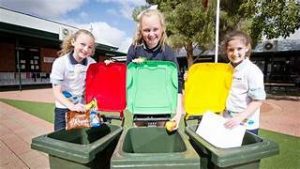
We also participated in Plant life's annual campaign No Mow May. Educating our children on the
importance of boosting flowers, and nectar, available to pollinating insects such as bees, butterflies,
and moths. This then also allows spring flowers to set seed and plants to establish themselves in
advance of the summer.
At Inspirations we believe that by introducing eco-friendly and environmental education at an early
age, we are nurturing a generation of responsible and environmentally conscious citizens. Our vision is that all our children grow up with an understanding of the impact their actions have on the planet and are developing a sense of responsibility towards it.
We are so excited to be starting our eco-school journey in the new academic year, working towards
our first Eco-Schools Green Flag. We also have a community project that we are so excited to get
involved with and can’t wait to share with you.
Together, we can make and create a greener and more sustainable future.
Tara Slade.
Coaching vs Training
What is the difference coaching vs training?
Training is designed to increase knowledge and skills. Coaching is designed to increase self-awareness about attitude, behaviors, choices, and development needs.
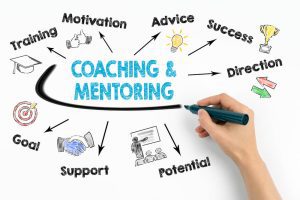
What does it look like in practice?
Training and mentoring are about the transferring of knowledge from teacher to student.Coaching is about enhancing, supporting, and facilitating the practitioner to step in and be actively engaged in their own growth and knowledge. Drawing out the skills and training they already have.
Many practitioners have a wealth of knowledge and so the early years training might not be best for them. Since, and during the pandemic online training has become very popular and lots of companies provide many wonderful courses. We all seem to have lots of certificates and are totally aware of the importance of our Continuing Professional Development (CPD) but are we seeing it in practice?
This is where coaching comes in. Coaching is about working alongside everyday practitioners in the setting, to implement training that they already have. It also provides the opportunity for the practitioner to get a huge amount of knowledge and expertise delivered in the moment.
The obvious drawback with coaching can be the cost! It can vary in price and can be expensive. Settings need to look at the current qualifications and skills they already have and build from there. Are we seeing those skills in practice? If not, coaching needs to be considered. As a trainer this is something I want to implement within our setting. Sharing and showing our skills, knowledge and experience should be key for development.
Coaching is also a wonderful way for positive role modelling to be demonstrated. Many factors influence the behaviour of children in early years settings. The behaviour of people who work closely with children has a great effect and influence. We all cope differently in stressful situations, so having a person to coach and mentor you through challenging times is invaluable.
We want to develop a coaching culture at inspirations. Where everyone feels valued and supported. A coaching culture improves the way we are with each other, but also our interactions with the children. At its core, it is about helping people get from where they are to where they want to go. Whether privately or in a group, coaching empowers people to increase their self-awareness and self-esteem.
Tara Slade
The importance of STEM/STEAM learning in EYFS (Science, Technology, Engineering, Art and Maths)
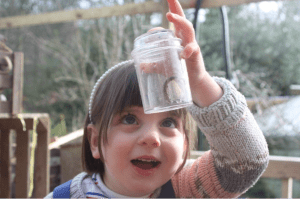
Young children are the ultimate sources of wonder and natural curiosity, with limitless drives to explore. They are the world's natural problem solvers, seeking new and exciting challenges and ways to ‘do’ and improve things. They predict outcomes, test their ideas or questions, spot patterns, estimate and evaluate critically. Through incorporating aspects of STEAM into our child-led-play environment, children are encouraged to develop their resilience and to communicate, work collaboratively and to make compromises.
Each of these skills are aspects of the EYFS Characteristics of Effective Learning. At Inspirations Nurseries I believe that STEAM is naturally embedded in our ethos and pedagogy and should be in all early years education and settings.
STEAM is a multidisciplinary and holistic approach to teaching these subjects, which is what our provision is based on, the areas where learning overlaps. Our outdoor setting/classrooms, art studios and child-led learning approach already provides a rich STEAM enabling environment where children can experiment, explore and have a wonder for their world.
Science is fully embedded in our provision: within the daily and seasonal links to nature, cycles (tadpoles/chicks/weather/water/decomposition) and the equilibrium needed for different types of energy (their transfers and ‘cause and effect’). It is in chemical reactions, materials and their properties, in temperature, size, force and motion.
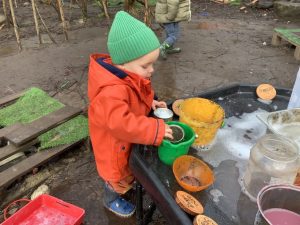 We support our children to experiment with ‘cause and effect’, providing sensory experiences with construction and creative media resources, using containers, utensils and other tools for transforming materials from solids to liquids. We use textured materials and ramps with vehicles to investigate the speed and force of objects in a developmentally and appropriate way.
We support our children to experiment with ‘cause and effect’, providing sensory experiences with construction and creative media resources, using containers, utensils and other tools for transforming materials from solids to liquids. We use textured materials and ramps with vehicles to investigate the speed and force of objects in a developmentally and appropriate way.
In the last few weeks, the children in our toddler room have been blending, stirring, whisking silly soups and potions. They have been measuring ingredients when making pancakes and looking at the capacity of containers in the water trays. Our pre-schoolers have been using magnifying glasses to observe various "minibeasts" collected from various locations around nursery, whilst extending their interest of digging and improving their fine motor skills.
Technology, and tools like projectors, cameras, microscopes, sensory toys, lights, mark making and cutting tools, are part of our continuous provision. We also use online platforms and apps to provide learning opportunities for children to record and observe. Technology helps children to make discoveries and record findings, to explore the consistency, composition and uses of materials and resources.
We have a nursery full of budding engineers, and architects who daily stack, design, construct, connect, and build. They make houses, towers, bridges, and roads for their vehicles and containers, traversing and transporting which extends their own learning journey. As children play, staff promote STEAM in their interactions, provocations and questioning.
Our resident atelierista, provides a wealth of opportunities for extending STEM subjects and skills within the arts and creative play. A curriculum incorporating the arts has been proven to increase creativity, academic performance, motor skills, while enhancing visual learning and boosting higher decision-making and critical thinking skills.
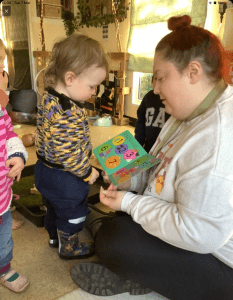 Mathematical literacy is enriched daily through singing and stories. Our environment and the continuous provision of resources, such as containers, funnels, measuring cylinders and loose parts, allow opportunities to compare size, capacities, volumes as well as categorisation of shapes and colour.
Mathematical literacy is enriched daily through singing and stories. Our environment and the continuous provision of resources, such as containers, funnels, measuring cylinders and loose parts, allow opportunities to compare size, capacities, volumes as well as categorisation of shapes and colour.
STEAM takes STEM to the next level by including the process of innovation and creativity. The integration of these principles through the arts fosters a generation of future innovators who can link their learning and skills together, removing limitations and replacing them instead with wonder, critique, inquiry, and innovation.
Kellianne Moulton
Odin Our Nursery Dog
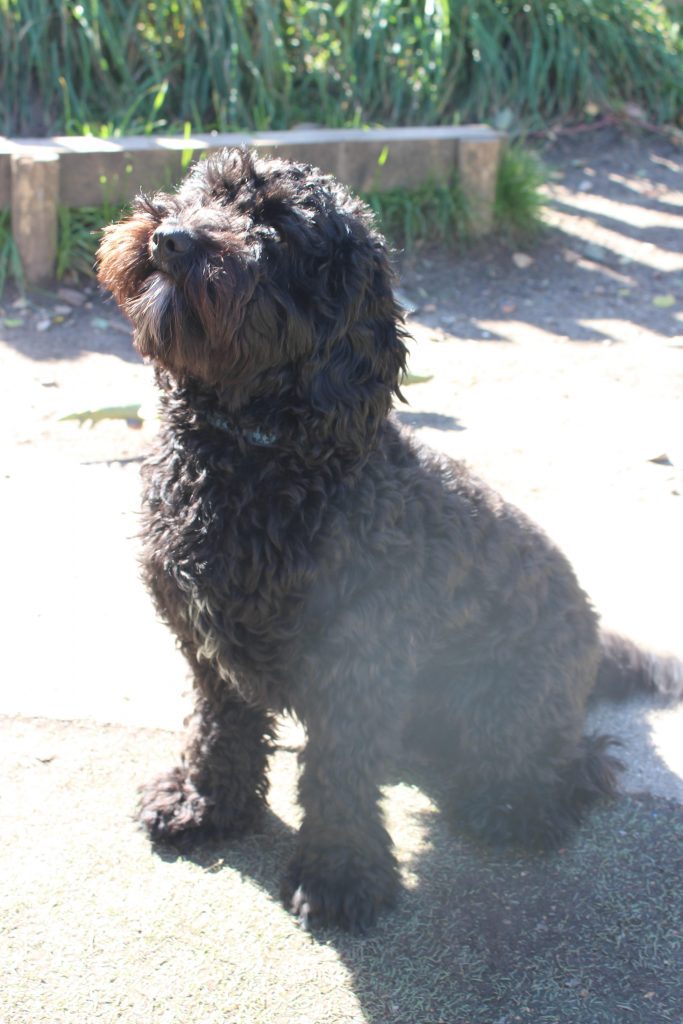
Have you met Odin at nursery? Odin is a cavapoo that comes to nursery on Mondays, Tuesdays and Thursdays, every week. A cavapoo is a cross between a Poodle and a King Charles Cavalier. They are both playful and affectionate breeds, which don’t tend to shed. He is hypoallergenic but no dog can be 100% hypoallergenic. However, he is bred from the most hypoallergenic breed, so may cause fewer symptoms in allergy sufferers. He is also very affectionate and loves a cuddle and a stroke!
Odin is my dog and I have been bringing him to nursery since I homed him at 10 weeks old. I researched and intentionally chose a cavapoo to be around children and the staff at nursery. He is a very sociable dog and loves the attention and interaction he gains from humans.
Pets bring comfort and companionship to some people. For some people having a cuddle or even a little stroke with a friendly dog can make them feel better if they are low or just need some comfort. In fact, research has been shown that just stroking a dog reduces stress levels and interacting with a dog increases levels of oxytocin (the feel-good hormone!). Some organisations who take part in mental health awareness, take visits from pets as therapy to support the people they are working with as part of their support network. It is becoming increasingly popular for childcare establishments, including schools and education, to bring a dog in to support the children and staff. They can support the schools to help children with their literacy skills and even encourage concentration in the classroom. For us, one of our aims was for children to become familiar with dogs, to learn how to behave around them and to gain the knowledge to care for them.
It is part of cultural capital that we close any gaps in the children’s learning. Not all families can have dogs, so therefore children can be unfamiliar with them. We also believe that children can benefit in other ways from regular interaction with animals. These ways include:
- emotional regulation
- increased understanding of responsibility
- development of empathy
Many children also get great enjoyment out of caring for and interacting with animals.
Our over 3’s use Hunger Hills woods for forest school sessions, twice a day. This is a very popular dog walking destination, so the children are greeted daily by dogs. Some dogs we know by name, and they are always happy to greet us. The children know what to expect and how to behave around them.
From being in our baby room, the children will meet Odin. He has specific times to explore the rooms and outdoor areas with very close adult supervision. The children are encouraged from a young age to be calm, not to put their hand in his face or to pull his fur and tail. They are shown how to stroke him and once he has had a little smell they then know to leave him to explore the environment. In toddlers, they will try to chase him, but the staff educate the children that this is not what we do. The toddlers are very keen to stroke him and will frequently ask for him to come into their area. This is the age group where he is most popular!
We previously had a child with special educational needs who struggled to interact with their peers and the adults. Once they met Odin a few times, you could see a change in their behaviour. They would interact with Odin and even through Odin. It was lovely to see.
Equally, the staff enjoy Odin’s company. If they are feeling low, they know they can come for a cuddle or a stroke if that works for them. He is in the office most times but would gladly give anyone a cuddle or some attention if they need it. Some parents even come and say hello to him! Please feel free to meet him on the days he is in or even come for a cuddle if you need one!
Kayleigh
Summer Carnival 2022
Saturday 9th July we all came together on the field behind Nursery to have a carnival style summer party and to celebrate our soon to depart school leavers. We had bouncy castles, a steel drum band, face paints. a parade and costume competition, BBQ and a school leavers ceremony. Thank you to Truly Scrumptious and 1Toy2Play in Horsforth for providing our prizes for most colourful, and most innovative costume. We all had a wonderful day in the sunshine and we hope you did too.
https://www.youtube.com/shorts/fCqJB1hT4Eg
Transitions Within Nursery
Once that blissful Maternity leave you have just shared with your little one draws nearer to an end and the dreaded time comes to go back to work, beginning the transition process in to a Nursery, childminder or Nanny starts and it can be a big and daunting step for you and your little one. All sorts of emotions will come with this as you will no doubt be worried, sad, nervous, and anxious about leaving your child for the first time. However please be assured the settling in process supports you and your child to overcome these negative emotions and instead, make you feel happy, excited and reassured about this next milestone.
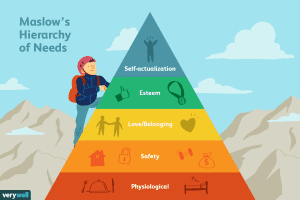 Young children starting a Nursery need support to enable them to adjust to a temporary separation from their family. Maslow’s Hierarchy of Needs demonstrates that children need to feel as safe, comfortable, and secure within the environment before they are able to move on to any other learning opportunities. Building a close bond with their Key Worker and the other Educators is particularly important so that they know they have someone to comfort them and make them smile when they are feeling a little sad. We aim to provide as much continuity and care as possible.
Young children starting a Nursery need support to enable them to adjust to a temporary separation from their family. Maslow’s Hierarchy of Needs demonstrates that children need to feel as safe, comfortable, and secure within the environment before they are able to move on to any other learning opportunities. Building a close bond with their Key Worker and the other Educators is particularly important so that they know they have someone to comfort them and make them smile when they are feeling a little sad. We aim to provide as much continuity and care as possible.
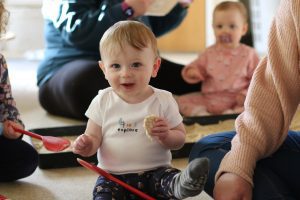 As children develop from birth throughout childhood this change involves a process for them to adapt their thoughts, feelings and behaviours to meet new expectations and even though this blog focuses on Transitions in to Nursery and between room bases, by the time they reach school age, they will more than likely of experienced more than just these transitions in their life. Depending on circumstances the child may be forced to attend more than one setting during the week and one of the big transitions they face is school. Next weeks blog will focus on transitions to school.
As children develop from birth throughout childhood this change involves a process for them to adapt their thoughts, feelings and behaviours to meet new expectations and even though this blog focuses on Transitions in to Nursery and between room bases, by the time they reach school age, they will more than likely of experienced more than just these transitions in their life. Depending on circumstances the child may be forced to attend more than one setting during the week and one of the big transitions they face is school. Next weeks blog will focus on transitions to school.
The Transition to Nursery is like a journey and takes time, preparation and planning. It is important to us that Parents and the Educators work together to make the process as smooth as possible.
The Procedure at Inspirations is as follows-
Under 2's
- A phone call is made to parents, by either the room leader or the Deputy room leader 4-6 weeks prior to the start date and a discussion is had to book in the home visit and settling in visits. It is also a chance to have a chat and ask any questions you may feel unsure about.
- Home visit 3-6 weeks prior to start date (applies to 2-year funded children also)
- Transition visits in to setting 1-2 weeks leading up to first day (1 x 1 hour with Parent, 1 x 1 hour on own and 2 x long visit (3-4 hours) over sleep and lunch or lunch and sleep depending on routine at time)
During these periods of settling in, we aim to share information and build up a picture of the child’s starting points, give a parent pack which will show pictures of the room they will start in along with pictures of the staff (identifying key worker and what their role is) and an overview of the daily routine. We give a parent handbook, check through paper work and talk about/document the routine they are currently following at home. We introduce their Key Worker and discuss any other information you feel relevant. It is also chance to speak about any allergies or dietary requirements
From 2-3 Years and Older
- A phone call is made to parents, by either the Room Leader or the Deputy 4-6 weeks prior to the start date and a discussion is had to book in the settling in visits. It is also a chance to have a chat and ask any questions you may feel unsure about.
- Transition visits in to setting 1-2 weeks leading up to first day (1 x 1 hour with Parent, 1 x 1 hour on own and 1 x long visit (3-4 hours) over lunch or tea
During these periods of settling in, we aim to share information and build up a picture of the child’s starting points, give a parent handbook, check through paper work and talk about, document the routine they are currently following at home. Introduce Key Worker and discuss any other information you feel relevant. It is also chance to speak about any allergies/dietary requirements
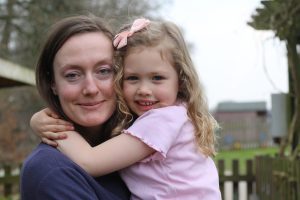 The procedure for room transitions is the same however, the conversations and planning happens between the Room Leaders, and the Key Worker attends the first visit with them. The Key Worker completes a transition form and takes this through on the first visit, this indicates starting points for the child and any other information that needs to be passed on.
The procedure for room transitions is the same however, the conversations and planning happens between the Room Leaders, and the Key Worker attends the first visit with them. The Key Worker completes a transition form and takes this through on the first visit, this indicates starting points for the child and any other information that needs to be passed on.
The impact of our procedures has shown us that the time given for them to settle in before starting is more than sufficient and during this time they have began to familiarise themselves with the environment and the Educators, in particular their new Key worker. However, if there is a chance it hasn’t gone as planned, we can offer additional support by allowing more settling in visits.
All this ground work to ensure smooth transitions helps create the right environment for your children to become confident little leaners here at Inspirations.
“If children feel safe, they can take risks, ask questions, make mistakes, learn to trust, share their feelings, and grow.” ~ Alfie Kohn
-Ashleigh
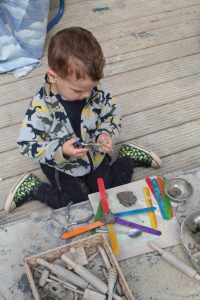

Teaching Maths through Nature
In my last blog ‘Lets Shake Up Education’ (25th March 2022) I highlighted my personal issues with today’s education system and explored the idea of schools being encouraged into an alternative method of teaching, potentially along the lines of Inspirations’ philosophy and pedagogy of child centred learning and adult/child collaboration and team work.
 In our current mainstream schooling system we have reduced teaching maths (along with a myriad of other subjects) to a behind the desk repetitive, memorising task with little to no practical, exciting exploration of content. It is hardly surprising then to note that a recent US study from The National Centre for Educational Statistics, suggested that approximately 70% of year 4 girls report an interest in maths, but by year 8, this figure had fallen to 53%, the largest decline during any period of time in a girl’s K-12 experience. For boys, 69% report an interest in maths in year 4, declining to 58% by year 8.
In our current mainstream schooling system we have reduced teaching maths (along with a myriad of other subjects) to a behind the desk repetitive, memorising task with little to no practical, exciting exploration of content. It is hardly surprising then to note that a recent US study from The National Centre for Educational Statistics, suggested that approximately 70% of year 4 girls report an interest in maths, but by year 8, this figure had fallen to 53%, the largest decline during any period of time in a girl’s K-12 experience. For boys, 69% report an interest in maths in year 4, declining to 58% by year 8.
Part of our philosophy here at Inspirations, is learning through nature, and when you really look closely, you can see so clearly maths throughout natural structures, it is in fact at the heart of all things natural! As The Centre for Learning Through Nature so aptly describes it-
‘It is ironic that teaching maths this way (though nature) should be considered innovative: Nature has long been the inspiration for the development of mathematical ideas. Mathematicians throughout history have marvelled at the fact that maths seems to “fit Nature like a glove.” “How can it be that mathematics,” Einstein famously wondered, “being after all a product of human thought independent of experience, is so admirably adapted to the objects of reality?” Galileo simply put it this way: “Mathematics is the language with which God has written the universe.”
 Indeed, mathematicians have discovered mathematical rules in the nature of light and gravity, in the shape and movement of planets, in rivers and trees, and in the beating of people’s hearts. It might fairly strike some as strange, then, that maths education so rarely has any Nature in it.’
Indeed, mathematicians have discovered mathematical rules in the nature of light and gravity, in the shape and movement of planets, in rivers and trees, and in the beating of people’s hearts. It might fairly strike some as strange, then, that maths education so rarely has any Nature in it.’
I ponder why this is so, it saddens me that it is. I know for certain I would have been so much more involved in a maths curriculum if it had, and my children too.
If you are interested in supporting your child’s mathematical development through practical, outdoor lead, nature enriched activities then think about going on an expedition to find:
1) The Fibonacci Sequence: a sequence of numbers beginning with 1 and 1, with each subsequent number being found by adding the two previous numbers together. Therefore, after 1 and 1, the next number is 2 (1+1). The next number is 3 (1+2) and then 5 (2+3) and so on.

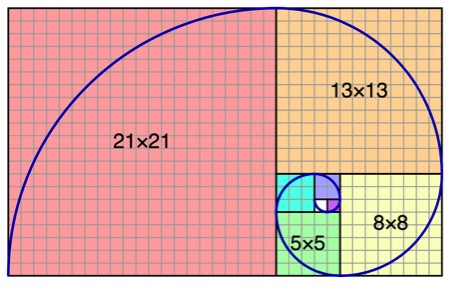
2) Fractals: meaning the same basic shape is seen again and again in the shape itself, if you were to zoom way in or zoom way out, the same shape is seen throughout. Take a look at a fern leaf for example.
3)Shapes: hexagons in honeycombs or try blowing bubbles and see what shape you make.
4)Concentric circles: look at the circles in a tree stump or draw some in the mud.
Our whole galaxy is a mixture of these incredible mathematical principles, why then is our maths curriculum not giving our children the opportunities they deserve. Opportunities to explore these truly exciting principles?
I for one don’t understand, and the system in my view must change. A change in the right direction could give our children back autonomy over their own learning, to find the excitement of learning and exploring within and of nature. Who knows, maybe, like Galileo and Einstein, they too might discover some new principle of the universal language of maths, an opportunity not likely to happen sat behind a desk following a prescribed performance related curriculum…
What do you think?
-Nicola


